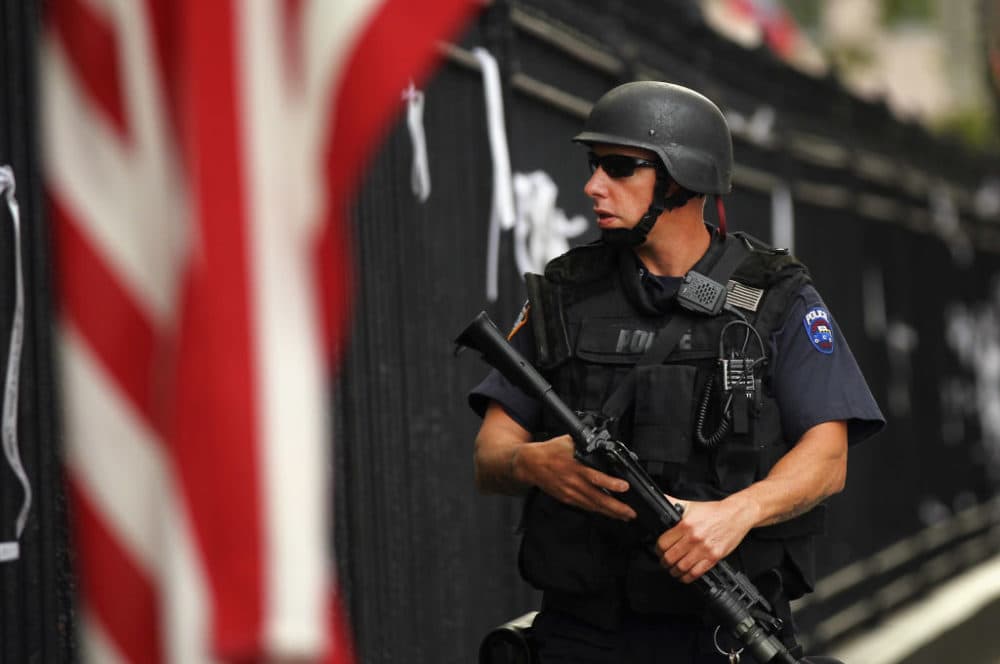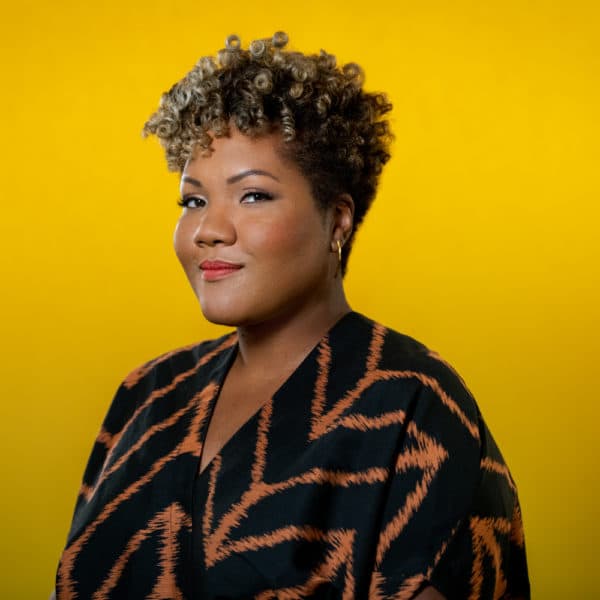Advertisement
Militarization Of Police 'Ramped Up' After 9/11, 'Rise Of The Warrior Cop' Author Says
Resume
Many aspects of American life have changed in the 20 years since the 9/11 terrorist attacks. Policing is one of them.
For one, police have more military equipment now. Chicago Heights, Illinois, recently abolished its park police force and discovered the department had access to M-16 rifles.
In disbelief, the mayor of the small city said, "I don’t see any reason why a part-time park district officer would need that type of arsenal.”
Washington Post opinion columnist Radley Balko has been examining policing over the last 20 years. He's the author of "Rise of the Warrior Cop,” which was recently updated to analyze policing through the Jan. 6th Capitol attack.
Balko says it’s not unusual for a suburban law enforcement agency to have M-16s. Militarization of the police goes back to the Reagan-era war on drugs when one program informally began giving surplus military equipment from the Pentagon to police departments across the U.S. The initiative, known as the 1033 program, was formally implemented when Congress passed a law in the 1990s.
However, the tragedy that unfolded on Sept. 11, 2001 ramped up and expanded police militarization, he says.
Post 9/11, the Department of Homeland Security enabled anti-terror grants that police departments across the U.S. could tap into to purchase new military-grade equipment such as armored trucks, ballistics gear and armored personnel carriers. These grants provide even more than the Pentagon surplus program did, thus fueling the birth of companies that make military-style equipment in order to cash in on the DHS checks, he explains.
“There hasn't been a lot of scrutiny about whether the places that are receiving this equipment are actual terror threats,” he says. “So you see them going to places like Fond du Lac, Wisconsin, and little cities in Idaho, Ohio and in towns in the suburbs.”
Departments that received military gear were supposed to use it to prevent terror attacks, but instead, Balko says officers often ended up using the equipment for everyday policing duties. When police officers dress, train or are armed like a military soldier, he says some officers will start to see themselves as such.
“And that's not really a mentality that we want in domestic policing,” Balko says.
The national conversation turned to police militarization during the 2020 protests against racism and police brutality following the murder of George Floyd. Flashbang grenades were used to stun protesters and sometimes helicopters lingered overhead for crowd control.
There are substantial costs to utilizing these police tactics, Balko says. Trust between officers and the communities they serve often splinters, he says, or police shootings occur that could have been prevented. And when people fear the police more than they fear criminals, he says solving crimes becomes an enormous feat.
“When you see yourself as a soldier and you see the people you're supposed to be serving and protecting not as citizens with rights — but as a potential threat — that's going to lead to more violence or you're going to be more wary,” he says.
In 1997, the Clinton administration implemented the 1033 program, which operates in all but one state. It has been a political back-and-forth since 9/11, with former President Barack Obama restricting the program and former President Donald Trump then rescinding those restrictions.
Currently, the program still exists.
“The Obama administration, I think, deserves credit for being the first administration really ever to at least acknowledge that militarization of police is a problem,” Balko says. However, the restrictions were “mostly symbolic,” he says, because by the time the restrictions were implemented, many law enforcement agencies had already moved to other ways of getting military-style gear.
Determining whether the militarization of police has increased public safety overall is difficult to measure, he says. Since 9/11 two decades ago, crime has mostly dramatically decreased, he says, and some police departments have gotten better at holding officers who violate policy accountable for their actions.
On the other hand, “the amount of force that police are allowed to use as a matter of policy, as a matter of law, has increased,” he says. Society has become more and more comfortable with seeing SWAT teams arrive at low-level crime scenes, present for search warrants or enforcing regulatory code like underage drinking, he says.
During the protests last year, polls revealed more people showing support for Black Lives Matter and acknowledging the existence of institutional racism and police brutality. The change in mindset is clear, and reform has evolved on the local level. But Balko remains hesitant of any federal reform from the country’s “risk-averse” Congress.
Balko says he isn’t a police abolitionist but believes there are many ways to “shrink the police footprint,” including removing officers from traffic enforcement and school systems.
For both abolitionists and people who support funding the police, Balko says the end goal is the same: to keep communities, especially vulnerable ones, safer without violating people’s rights. He argues that’s the discussion that needs to be had.
Lynn Menegon produced and edited this interview for broadcast with Todd Mundt. Serena McMahon adapted it for the web.
This segment aired on September 9, 2021.

